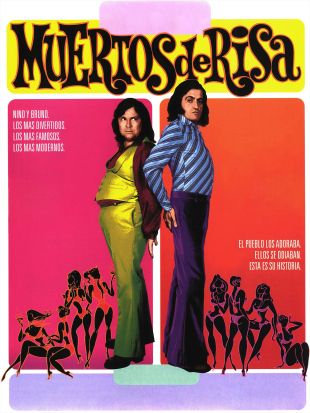
Gleefully playing off of the stereotypically perceived obsessive dark sides lurking just beneath the jovial humor of comics and comedic actors, Alex de la Iglesia takes the concept of the disturbed comedian to new levels in the hilariously bleak Dying of Laughter. Committing itself to the dark side of humor inhabited by such cinematic characters as Rupert Pupkin and Shakes the Clown, with a twist of the dysfunctional perceptions of such comic teams as Lewis and Martin, de la Iglesia serves up a hatred so fatalistic that at the black-hearted core, all we can do is to laugh at the pain. Nino and Bruno (Santiago Segura and El Gran Wyoming) shoot to comic stardom as the perfect comedic pairing of the suave ladies' man and the fat clown who gets slapped -- literally. As the resentment, rage, and jealousy between the comedic duo builds to a fever pitch (Nino wants Bruno's mojo, while Bruno pines over Nino's impeccable natural comic abilities), viewers receive a biting crash course in how to fracture a fragile showbiz ego and the fine art of bitterly spiteful revenge. The tables are constantly turned as murder, sabotage, humiliation, and the sadistic satisfaction of watching one suffer while the other thrives drives the film -- and Nino and Bruno -- to a shootout on live television. Spitting venom with their spiteful last breaths as the studio audience nearly explodes with laughter and approval, de la Iglesia turns a distorted mirror on the naïvety of humor extracted from suffering. Thought not as strikingly visual or kinetic as de la Iglesia's earlier films, it still bears the distinct mark of his unique vision by delivering on it's all too telling, humorously gaudy period re-creation as it follows the ill-fated duo from its infancy in the 1970s to the present. Creative and surreal touches such as the viewer bearing witness as Nino and Bruno literally rot from the inside as they merrily sign autographs for children are a powerful testament to de La Iglesia's use of special effects as a means of communication rather than a display of technical merit, and are used refreshingly sparingly, signaling the directors confidence in his audience as well as his own abilities.
